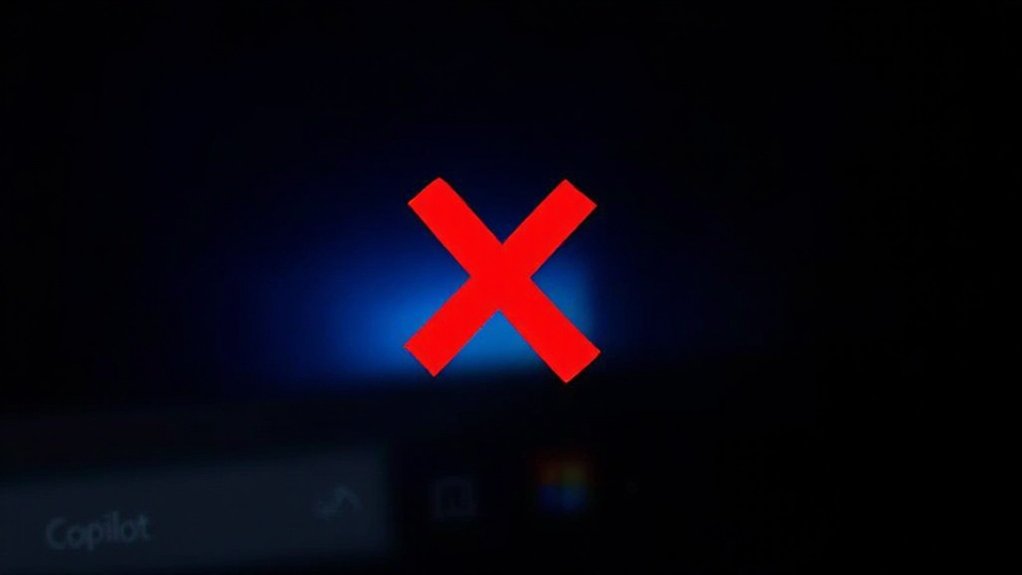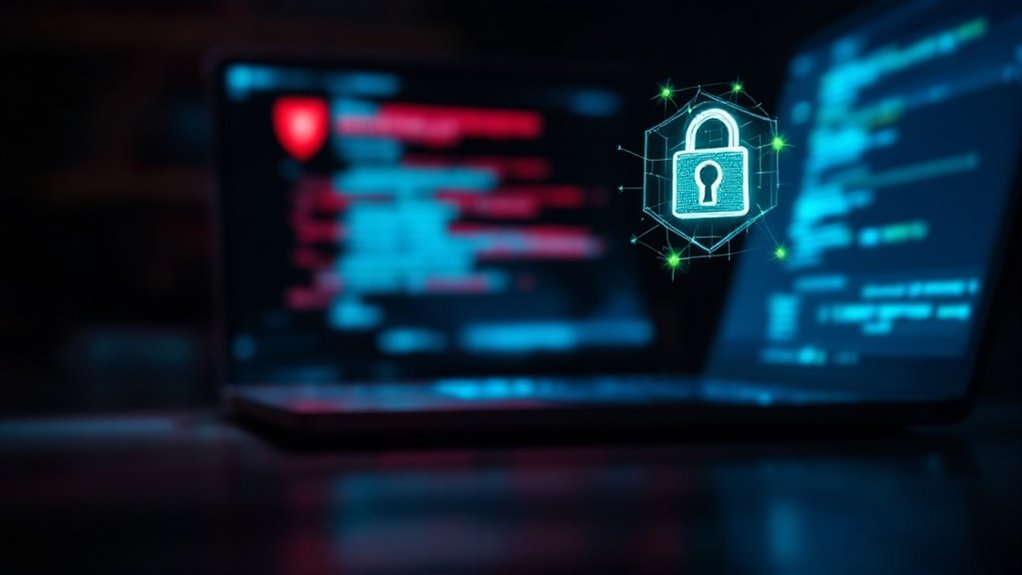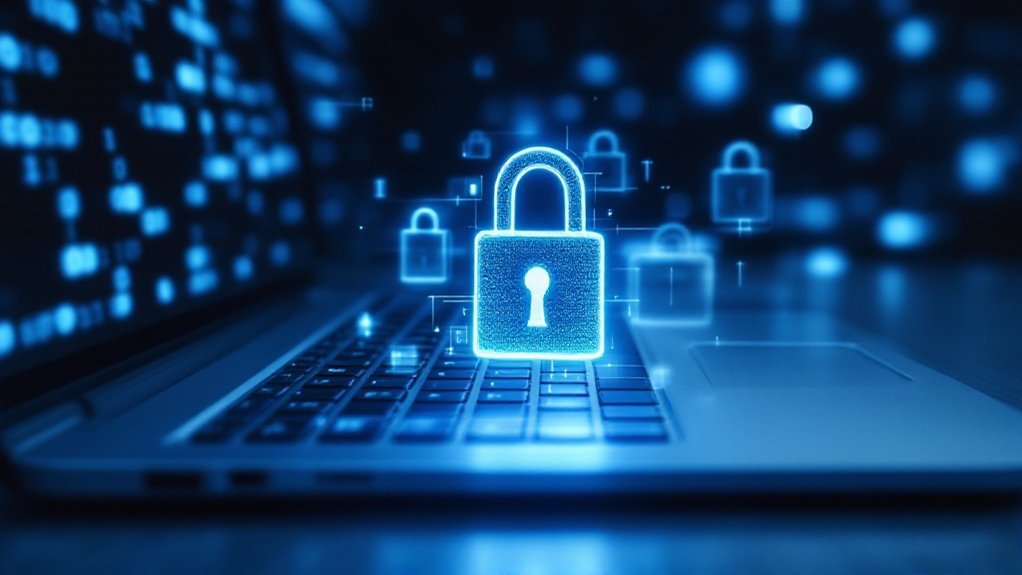Cybersecurity threats manifest through multiple attack vectors, including malware infections, phishing attempts, and ransomware attacks that can compromise personal data and financial accounts. Organizations face average data breach costs of $4.35 million, whereas 60% of small businesses fail within six months of a cyberattack. The integration of IoT devices, 5G networks, and AI systems continues to expand potential vulnerabilities, as cybercrime costs project to reach $10.5 trillion by 2025. Understanding these evolving risks represents the first step toward implementing effective protective measures.

As cybersecurity threats continue to evolve at an unprecedented pace, organizations worldwide face an increasingly complex environment of digital risks that pose substantial financial and operational challenges.
The impact of these threats is substantial, with the average cost of a data breach reaching $4.35 million in 2022, whereas 60% of small businesses cease operations within six months of experiencing a cyberattack.
The staggering financial toll of cyberattacks forces many small businesses to close, while larger organizations face millions in breach-related costs.
Organizations must contend with various attack vectors, including malware infections, phishing attempts, and increasingly sophisticated ransomware attacks that can encrypt critical data systems. Man-in-the-middle attacks frequently compromise sensitive data by intercepting communications between clients and hosts.
The threat environment is further complicated by insider risks, where employees, contractors, and privileged users may intentionally or inadvertently compromise security through misuse of access privileges or susceptibility to social engineering tactics.
Third-party relationships and supply chain connections introduce additional vulnerabilities, as organizations must rely on vendors, cloud service providers, and managed service providers who may have varying levels of security implementation.
The integration of emerging technologies, including IoT devices, 5G networks, and AI systems, continues to expand potential attack surfaces and introduces new vectors for cybercriminal exploitation. Zero-day exploits remain particularly dangerous as they target previously unknown vulnerabilities before patches can be developed.
The regulatory environment adds another layer of complexity, with stringent requirements such as GDPR imposing fines up to €20 million or 4% of global turnover for non-compliance.
Organizations must likewise navigate industry-specific regulations and requirements, such as HIPAA in healthcare and NERC CIP in the energy sector, meanwhile maintaining strong security practices.
To address these challenges, organizations are implementing thorough mitigation strategies that include regular security awareness training, multi-factor authentication, and routine system updates. Professional ethical hackers are increasingly employed to identify and remediate security vulnerabilities before malicious actors can exploit them.
The implementation of encryption for sensitive data, both at rest and in transit, combined with frequent vulnerability assessments and penetration testing, has become crucial for maintaining security posture.
As cybercrime continues its projected trajectory toward $10.5 trillion in annual costs by 2025, organizations must remain vigilant in their security practices and adapt to evolving threats in the digital terrain.
Frequently Asked Questions
What Are the Most Secure Passwords to Use Against Hackers?
The most secure passwords combine random words, numbers, and special characters during maintaining a minimum length of 20 characters.
Security experts recommend using passphrases like “C0rr3ctH0rseBatt3ryStapl3!” or password manager-generated combinations such as “kT9$mN2#pL5@vB8&xQ4.”
These complex strings, when paired with two-factor authentication and regular updates, provide strong protection against brute force attacks, dictionary-based hacks, and social engineering attempts.
How Often Should I Change My Device’s Security Settings?
Security experts recommend reviewing and updating device security settings every 3-6 months, with additional checks following major operating system updates or security incidents.
Critical settings, including app permissions, automatic login configurations, and device syncing options, should be monitored regularly.
After adding new software or devices, immediate adjustments are necessary.
Weekly automated scans and 60-90 day password changes further improve device security through systematic maintenance.
Can Hackers Access My Device Through Public Charging Stations?
Hackers can certainly access devices through public USB charging stations using a technique called “juice jacking.”
This cyberattack method exploits USB data transfer pins to install malware or steal information within one minute of connection. Research indicates that compromised charging stations can access personal data, install surveillance software, and manipulate device functions.
To prevent attacks, experts recommend using personal AC adapters, data-blocking cables, or portable power banks instead of public USB ports.
Are Password Manager Applications Truly Safe to Use?
Password managers are typically secure when implemented properly, using industry-standard encryption protocols like AES-256 and zero-knowledge architecture.
Although no system is completely invulnerable, reputable password managers offer significant protection through two-factor authentication, encrypted vaults, and dark web monitoring.
Users must follow security best practices, including creating strong master passwords and keeping software updated, to maximize safety and minimize potential risks of credential compromise.
What Should I Do Immediately After Discovering My Accounts Are Compromised?
Upon uncovering compromised accounts, users should immediately change all affected passwords, using strong unique combinations for each account.
Critical next steps include notifying financial institutions, enabling two-factor authentication, and running thorough security scans on all devices.
Victims must report the incident to the FTC, monitor credit reports for unauthorized activity, and implement fraud alerts through major credit bureaus as they review recent account transactions for suspicious patterns.









